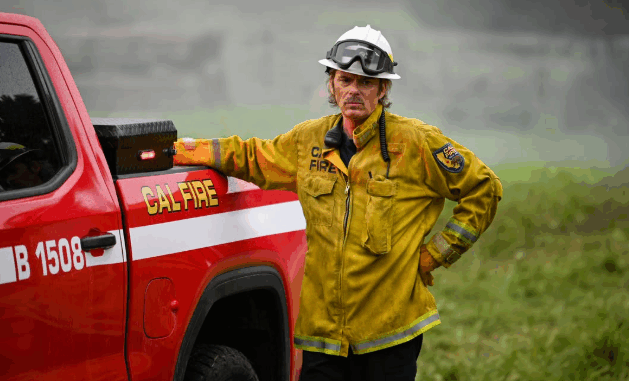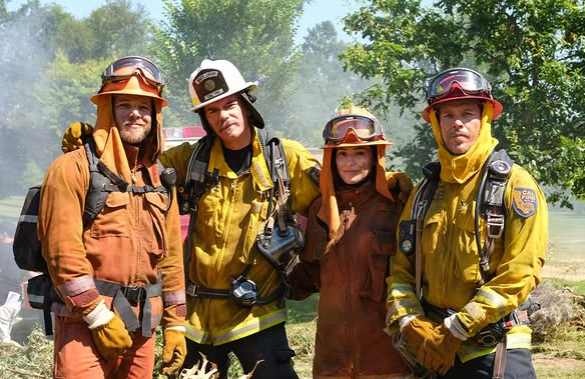
A Series Born in Smoke and Ash
CBS’s Fire Country has captivated viewers with high-stakes drama, intense firefighting action, and deeply human stories of redemption. But beneath the gripping plots and character arcs, the series performs another critical function: it serves as a stark, emotional window into California’s escalating climate crisis.
The wildfires in Fire Country are more than just narrative devices. They reflect a terrifying truth — one that Californians know all too well. Climate change is no longer a distant threat. It’s here, it’s now, and it’s burning hotter, faster, and longer than ever before.
By intertwining real-world fire behavior with emotional storytelling, Fire Country becomes not just entertainment, but a cultural call to awareness.
California’s Fire Reality: No Longer a Season, But a Year-Round Crisis
California has always had fires, but what we’re seeing now is categorically different. Over the last decade, wildfires have grown in size, intensity, and frequency. Longer droughts, hotter temperatures, and drier vegetation — all symptoms of global warming — have transformed the landscape into a powder keg waiting for a spark.
The show smartly situates its narrative in this harsh reality. It doesn’t exaggerate the size or severity of the fires; in fact, it often underplays them. Because in real California, megafires spanning hundreds of thousands of acres have become disturbingly common.
By anchoring its drama in these truths, Fire Country reflects not just the physical devastation of climate change, but the emotional and societal toll as well — loss of homes, livelihoods, and even community identity.
The Human Cost: Firefighters on the Frontlines of a Crisis
One of the most powerful messages Fire Country delivers is this: the heroes we rely on are overwhelmed.
Firefighters — both professionals and inmate crews like those at Three Rock — are being asked to do more with less. They are battling fires that behave in unpredictable, explosive ways. These are not the controlled burns of decades past. These are walls of flame fueled by a climate spiraling out of control.
The show highlights how exhausting and emotionally damaging this work can be. Characters like Bode Donovan, Jake Crawford, and Eve Edwards are not just fighting fire — they are also grappling with PTSD, fatigue, and survivor’s guilt. Every mission risks their lives and chips away at their mental stability.
Through them, Fire Country humanizes a crisis we often reduce to numbers: acres burned, homes lost, lives taken. Instead, the show asks: what is the emotional price of saving a world that’s always on fire?
The Environmental Message Without Preaching

What Fire Country does exceptionally well is integrate environmental messaging without turning the show into a lecture. It doesn’t need to spell out climate change with charts and data — the visuals of charred landscapes and evacuated towns speak volumes.
Yet the show is clearly informed by real science. It portrays how changing weather patterns, forest mismanagement, and extreme heat contribute to uncontrollable fires. The dialogue occasionally weaves in subtle references to these issues, but always in the context of character-driven decisions.
This balance is key to the show’s effectiveness. By embedding facts into emotionally compelling stories, Fire Country reaches an audience that might otherwise tune out climate news. It tells us the truth — not through stats, but through characters we care about.
The Inmate Firefighter Program: A Real Solution Under Threat
One of Fire Country’s most unique contributions to public awareness is its portrayal of California’s real-life Conservation Camp Program. This initiative, which allows incarcerated individuals to train and serve as firefighters, is not a fictional invention. It’s a critical component of the state’s emergency response system.
These inmate crews are often on the frontlines of wildfires, risking their lives for a few dollars a day — and, for many, a second chance.
The show doesn’t romanticize the program. It shows the risks, the inequalities, and the emotional weight of asking prisoners to save towns that may not want them back. But it also shows the hope. Inmates like Bode don’t just fight fire — they fight for dignity, self-worth, and redemption.
This spotlight on the Conservation Camps reminds viewers of a system that is both effective and controversial — and, increasingly, under scrutiny due to labor concerns and policy changes.
Community in Crisis: How Fire Reshapes Identity
In Edgewater, the fictional town where Fire Country takes place, wildfire is not just a threat — it’s a defining force. The community lives in constant tension, knowing that any summer could bring devastation.
The show accurately portrays how climate-driven disaster reshapes small towns. It disrupts schools, forces evacuations, and frays the social fabric. Longtime residents either adapt or leave. New tensions arise over land use, water rights, and how best to prepare for the next big burn.
By focusing on Edgewater’s citizens — the Leone family, fire crews, and townsfolk — Fire Country examines how people grieve, rebuild, and resist in the face of recurring catastrophe. It’s not just the land that’s scarred — it’s the people too.
The New Normal: Fire as a Permanent Reality
One of the most chilling implications of Fire Country is that the fires are never really gone. Even when a blaze is contained, it’s never the end. There’s always another ignition point, another lightning storm, another failure in infrastructure.
This reflects a harsh truth for California: fire is the new normal.
The show doesn’t shy away from this grim reality. Instead, it asks what kind of people we need to be in a world where fire is no longer the exception but the expectation. It shows us heroes who are tired but unyielding, communities that are broken but rebuilding, and individuals who find meaning in the ashes.
Why This Matters Now More Than Ever
Fire Country arrives at a cultural moment when public trust in climate science is still fractured, and climate action remains politically divisive. But through its storytelling, the show cuts through the noise. It doesn’t ask viewers to become activists — it asks them to empathize.
It shows the human cost of climate change in a way few other dramas have dared. And in doing so, it may reach hearts that charts and headlines cannot.
The takeaway is clear: the climate crisis isn’t an abstract future. It’s present. It’s personal. And it’s burning.
Conclusion: Entertainment With a Mission
Fire Country succeeds because it’s an excellent drama, filled with tension, emotion, and unforgettable characters. But it resonates on a deeper level because it captures the feeling of living on a warming planet — the anxiety, the grief, and the resilience.
By setting its story in the middle of a real environmental disaster, the series forces us to confront what we often ignore: that the fire is already here.
And just like the characters we’ve come to love, we must decide who we want to be in the face of it.
